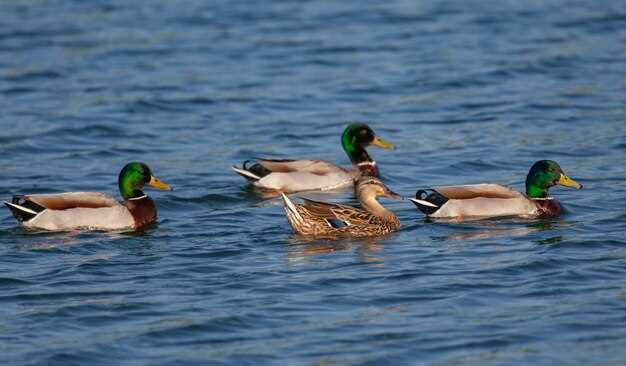
In the realm of aviation design, the concept of canards holds a significant place due to their unique aerodynamic properties. These small, forward-mounted wings are often referred to as “mods” that enhance the overall performance of an aircraft. By engaging with the principles of aerodynamics, canards serve not only as stabilizing elements but also as effective tools for improving lift and maneuverability.
The aerodynamic function of canards is primarily linked to their ability to alter airflow around the main wings of the aircraft. When strategically placed, canards can generate additional lift at lower speeds, increasing an aircraft’s capability for sustained flight in challenging conditions. This attribute is particularly crucial for fighter jets and high-performance aircraft that require rapid responses and agile performances.
Moreover, canards contribute to improved pitch stability and control, further enhancing the aerodynamic efficiency of the vehicle. Through careful design and placement, engineers can optimize the interaction between the canard and the main wings, creating a harmonious balance that reduces drag and maximizes lift. Understanding these dynamics is essential for anyone involved in aircraft design and aeronautical engineering, as canards continue to push the boundaries of flight innovation.
How Canards Impact Aircraft Stability in Different Flight Conditions
Canards play a crucial role in determining the stability and control of aircraft under various flight conditions. These small foreplane surfaces, positioned ahead of the main wings, can significantly enhance or reduce stability based on operational speed, angle of attack, and other aerodynamic factors.
During low-speed flight, canards improve longitudinal stability by providing an additional lifting surface. It reduces the aircraft’s tendency to pitch up or down excessively. By generating lift at the front, canards help maintain a more balanced aerodynamic profile, allowing for smoother maneuvers and easier control. This stability is particularly beneficial during takeoff and landing phases.
In high-speed conditions, canards contribute to increased maneuverability. Their position enables them to react quickly to aerodynamic changes, allowing pilots to make sharper turns or recover from potential stalls more effectively. The mods in canard design can create varying levels of downforce, improving overall control during high-speed flight.
However, the effectiveness of canards can diminish under certain conditions, such as during extreme angles of attack. Excessive pitch can lead to flow separation, reducing the benefits that canards offer in stability. In these scenarios, their design and the way they interact with the main wing become critical in maintaining control.
Additionally, canards can influence lateral stability. They can counteract adverse yaw and improve roll rates, making aircraft more responsive when changing direction. This characteristic can be particularly advantageous in combat scenarios or performance-oriented aviation, where agility is essential.
Overall, the modification and positioning of canards can significantly impact aircraft performance, enhancing stability across a spectrum of flight conditions. As designers continue to innovate, understanding these dynamics remains key to optimizing aircraft efficiency and safety.
Practical Applications of Aerodynamic Modifications with Canards

Canards are highly effective aerodynamic modifications employed in various aircraft designs to enhance performance and control. Their primary function is to provide additional lift and improved stability, particularly during critical flight phases such as takeoff and landing. By positioning canards in front of the main wings, designers can manipulate airflow, which can lead to significant improvements in overall aircraft efficiency.
One notable application of canards is in military aviation. Fighter jets often integrate canards to achieve superior maneuverability and agility. This design allows for enhanced control at high angles of attack, making it easier for pilots to perform complex aerial maneuvers during combat situations. The ability to adjust lift dynamically is crucial for aircraft engaging in dogfights, where rapid changes in direction are necessary.
In civilian aviation, canards have also found their place. For instance, some business jets and small aircraft utilize canards to shorten required takeoff distances. By increasing lift at lower speeds, these modifications enable aircraft to operate from shorter runways, expanding operational versatility and accessibility. This is particularly beneficial for regional aircraft servicing smaller airports.
In the realm of unmanned aerial vehicles (UAVs), canards are used to enhance stability and control during various flight maneuvers. The reduced size and weight of such modifications in UAVs allow for design flexibility, enabling engineers to create more efficient flying platforms. Enhanced aerodynamic performance leads to longer flight times and improved range, which are critical factors for reconnaissance and surveillance missions.
Additionally, canards are significant in the realm of Formula racing. High-performance race cars often incorporate aerodynamic canards to generate downforce at high speeds. This downforce is essential for maintaining traction and stability, particularly in sharp turns. By strategically placing canards on the vehicle, engineers can optimize airflow around the body, improving overall handling and speed.
In conclusion, the practical applications of aerodynamic modifications with canards span multiple domains, including military and civilian aviation as well as motorsports. These innovative designs not only enhance performance but also open new possibilities for aircraft and vehicle functionality, demonstrating the versatility and effectiveness of canard systems in modern aerodynamics.
Choosing the Right Canard Design for Specific Performance Goals

Selecting the appropriate canard design involves a comprehensive understanding of the desired performance characteristics of the aircraft. Canards serve multiple functions, including improving stall behavior, increasing lift, and enhancing maneuverability. The primary factors to consider when choosing a canard design include the aircraft’s mission profile, speed range, and overall aerodynamic efficiency.
For aircraft aimed at achieving high-speed performance, canards with a more streamlined shape and smaller surface area may be optimal. These designs reduce drag at higher velocities, allowing for increased speed and improved fuel efficiency during cruise. Additionally, deep but short canards can provide necessary stability without compromising speed.
In contrast, if the objective is to enhance low-speed handling and stall characteristics, larger, more pronounced canards can be beneficial. These modifications contribute to increased lift generation at lower speeds and improve the aircraft’s overall controllability during critical phases of flight, such as takeoff and landing.
The placement of the canards also plays a crucial role in their effectiveness. Forward-mounted canards typically enhance pitch control and increase overall stability. On the other hand, rear-mounted canards may offer benefits in terms of reduced interference drag and better aerodynamic performance at higher angles of attack.
Additionally, the choice of materials and construction techniques can influence the performance of canards. Lightweight, high-strength materials allow for more intricate canard designs, enabling modifications that maximize performance without adding significant weight. Advanced composite materials can further improve the structural integrity and aerodynamic efficiency of the canard system.
Ultimately, aligning the canard design with specific performance goals requires careful analysis and consideration of trade-offs. Conducting simulations and wind tunnel tests can provide vital insights into the effectiveness of chosen mods in achieving desired outcomes. By understanding these principles, designers can ensure that canards not only meet performance criteria but also enhance the overall safety and efficiency of the aircraft.


